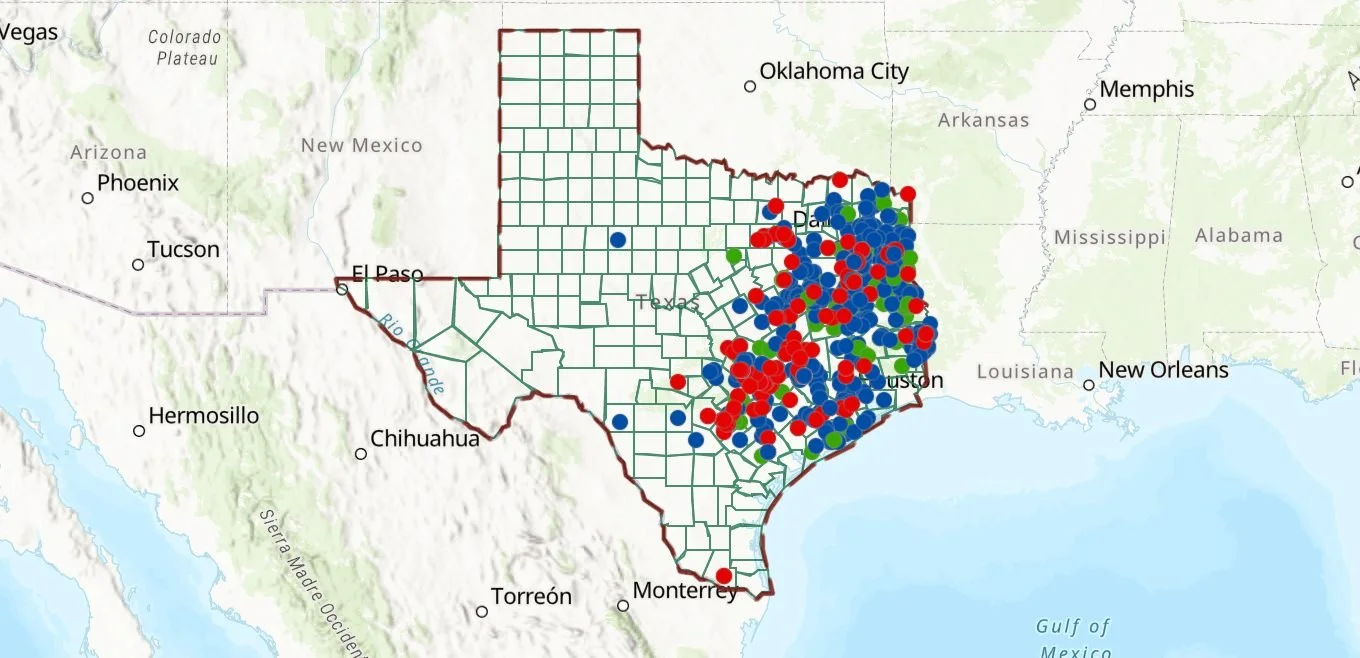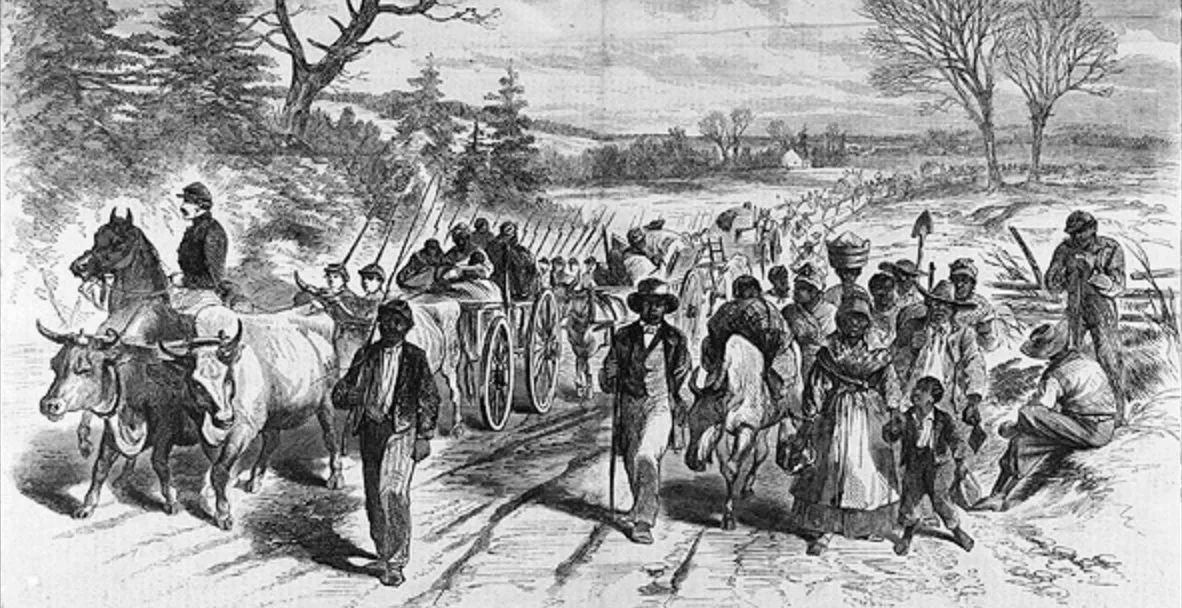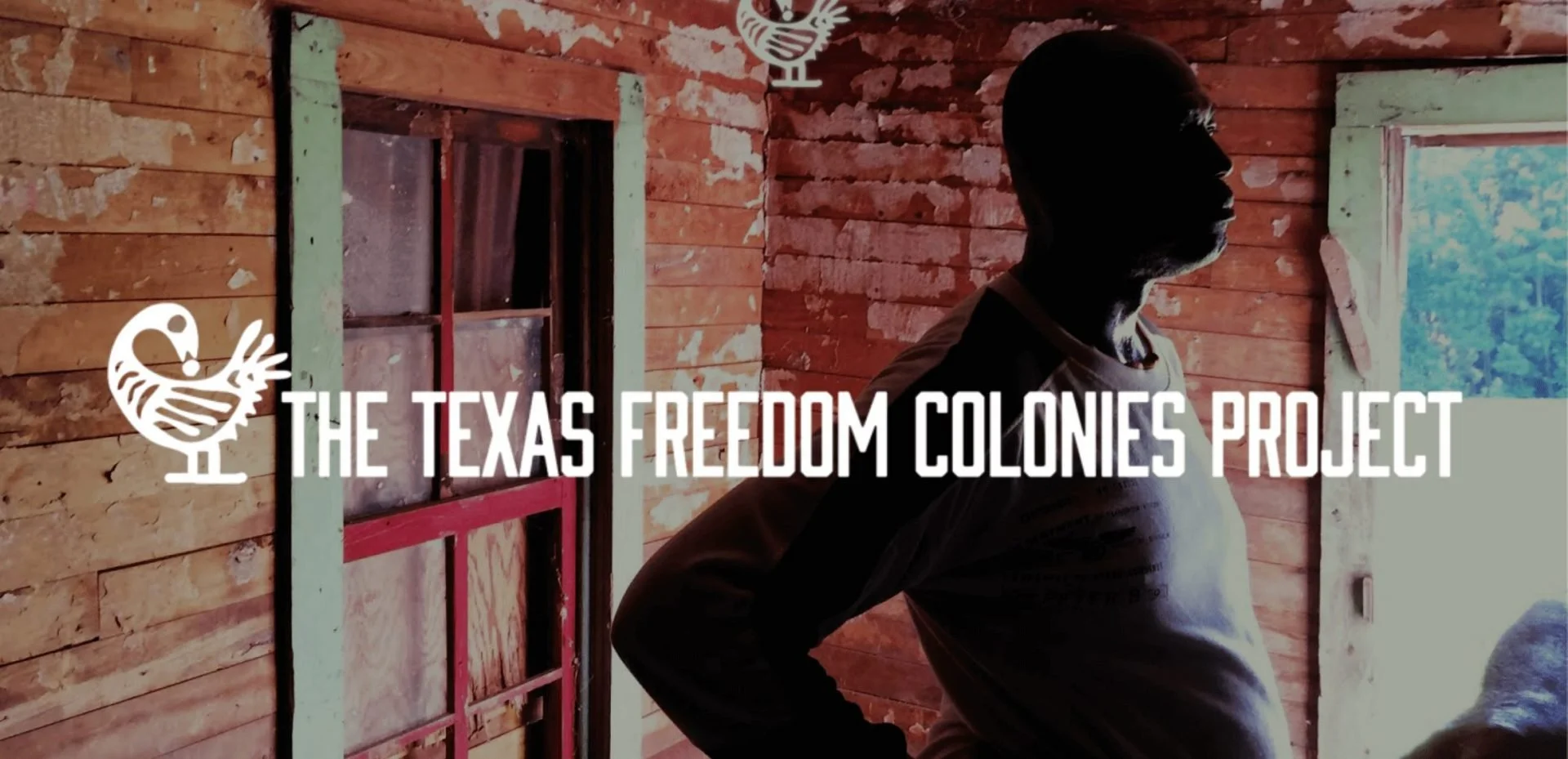Mapping Freedmen’s Settlement Across Texas
Discover > Truly Texan > Mapping Freedmen’s Settlement Across Texas
After the Emancipation Declaration in 1863 over three and a half million slaves found themselves homeless and often without any money. As liberating as the 13th amendment was, it proved an entirely new set of challenges for the newly freed peoples of America.
As far as these newly emancipated African Americans were concerned they had a couple of choices, sharecropping being the first and one of the most common. Sharecropping involved emancipated slaves working (typically white-owned) land, harvesting and selling their crop, and giving a cut of the proceeds to the landowner.
In theory, this system sounded potentially practical, but in practice, given the hardcore bias of these white landowners imposing unheard-of interest rates (even by today’s standards) that often left ex-slaves heavily indebted, and therefore unable to leave - that resulted in simply another form of economic slavery.
The second obvious option they had was to leave to go fend for themselves in a country and area that was still very much systemically racist.
What are Freedmen’s Settlements?
Enter the era of Freedmen’s Settlements. The millions of Black people that decided to break away from white-owned farms faced an entirely new set of challenges trying to integrate themselves into society. This made it hard for them to get jobs, own land, or gain any political influence. As a result, they segregated into their own communities which formerly came to be known as Freedmen's Settlements.
Freedmen’s Settlements History
Freedmen’s settlements started popping up shortly after the Civil War. Because the south was heavily embedded in the economics and practice of slavery, freedmen's settlements were most prominent in the south. Most of which in Texas. These settlements were often built far away from civilization to avoid any white supervision, particularly in the Jim Crow era.
Freedmen's Bureau
The Bureau of Refugees, Freedmen, and Abandoned Lands, usually referred to as simply the Freedmen's Bureau, was an agency of reconstruction that focused on assisting freedmen in the south. Established on the 3rd of March 1865, initiated by Abraham Lincon, and headed by Union General Oliver O. Howard. The agency found itself facing hefty obstacles primarily due to racist southern legislatures, like the Jim Crow Laws enacted in 1870.
One of the most prolific things the bureau arranged for African Americans was teaching them how to read and write. This provided the foundation for starting the freedmen's settlements, and in turn, build schools and educated their communities. They also provided food, medical care, communication, and jobs.
The agency began to fail as a result of democratic defunding in 1869 forcing it to cut most of its staff. The rise of the KKK also contributed to the collapse of the agency as they also targeted black sympathizers, from politicians to teachers, to civilians. The majority democrats were also increasingly disapproving of the agency, harmfully and quite wrongfully arguing that it made African Americans lazy.
The final nail in the coffin happened in 1872 when, after its renewal failed to gain the approval of Congress while one of its greatest proponents, Oliver Otis Howard, was in Arizona settling conflicts with Apache tribes.
The Race to Map Freedmen's Settlements
After the civil rights movement, many of these freedmen's settlements were either abandoned or integrated into the larger society. The issue is that during the height of these settlements, none of them were mapped or a matter of public record. This was due to the fact that these settlements typically lacked any stores or city halls, benchmarks of what, supposedly, makes up a town or city.
Meet Dr. Andrea Roberts & The Tx Freedom Colonies Project
Andrea Roberts has Ph.D. in Philosophy, is an Assistant Professor of Landscape Architecture & Urban Planning, and most notably for this topic, the founder of the Texas Freedom Colonies Project.
Since 2014, Dr. Roberts and her team have been locating, confirming, and mapping all the forgotten freedmen's towns that stretch across the whole of Texas. Of 557+ place records, 357 have been confirmed and mapped; no easy undertaking given that most of what is left of the original freedmen’s colonies are memories of the state's oldest seniors.
The atlas is an in-depth, highly detailed map of these towns, many of which have unsegregated themselves into larger, more diverse communities. It also invites you to share your community's story in hopes that more of these historic spectacles are discovered and cemented in modern culture.
Freedmen’s Settlements in Texas
While many freedmen colonies, like Barrett Station, built their communities far from prying eyes, some built them closer to already urbanized arrest like Dallas. Which by 1870 has over 3000 inhabitance. These are some of the oldest and most successful freedmen colonies of their time to give you an idea of what life would have been like:
Barrett Station
Located east of Harris county, this settlement was found by ex-slave Harrison Barrett. Born into slavery and freed by the emancipation in 1865, he spent several years gathering his family together (all of which he located except for his sister) before buying the land in 1889.
The land sat east of the San Jacinto River which Barrett acquired for 50 cents an acre. The settlement started off small with only 7 houses, and at its peak, the town had grown to home more families, thriving farms and businesses, a school, a church, a cemetery, and eventually a post office in 1957, leading the town to be known as Barrett Station.
Harrison Barrett’s house still stands on site today after over a century and generations of restoration and is open to go and see today.
Kendleton
The area of what is known as Kendleton today was originally a large cotton plantation owned by William E. Kendall. Shortly after the emancipation he divided his land into several smaller ones and sold them to freed slaves who eventually grouped together and started the freedmen’s town.
The addition of a railroad track and post office between 1882 and 1884 attracted more residents. By 1890 it housed 25 people and one general store. By 1996 the town contained two more general stores, a baptist, and a methodist church, and was home to over 100 people.
The town’s population fluctuated greatly between the turn of the 20th century and 1973 when it was incorporated as a city. Since then the population has steadily grown and sits at around 586 with a few thousand living in the surrounding area.
Little Egypt
Little Egypt was founded by Jeff and Hanna Hill who acquired the 35 acres of land for $300 in the 1880s. The name was to allude to the biblical Exosoud of the Israelite Jews from Egypt as is written in the Torah. At its peak, the town had one school for all grade levels, a cemetery, a baptist church, and multiple farms where they worked as sharecroppers on community farms or nearby plantations.
In 1961 the area was rezoned for retail use. The residents struck up deals with the building companies selling their homes and land, and well as receiving compensation for moving costs. At the time the streets were unpaved, it had no water or sewer connections, and the church had no central heating or restrooms. By 1962 the residents moved and the area was transformed into an urban shopping development.
Shankleville
Shankleville was arguably the very first freedmen’s town to be founded after the emancipation by James "Jim" and Winnie Shankle (3rd Paternal great-grandparents to NFL Hall of Fame Defensive End Michael Strahan) in 1867.
The area they bought amassed to around 4000 acres and invited families and other freed captives to settle there. It housed 75 families and included schools, churches, cotton gins, sawmills, grist mills, sugarcane mills, stores, and blacksmith shops.




